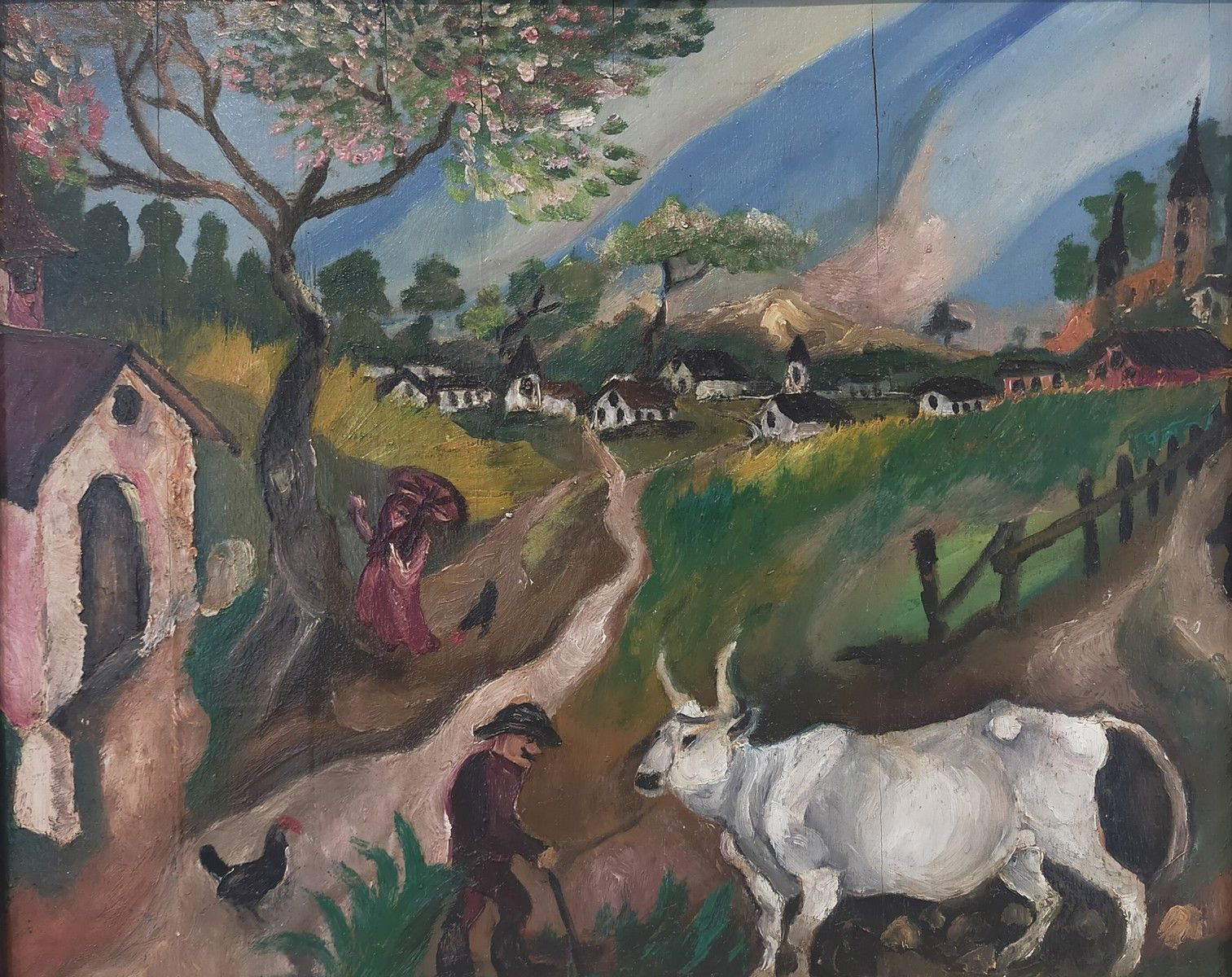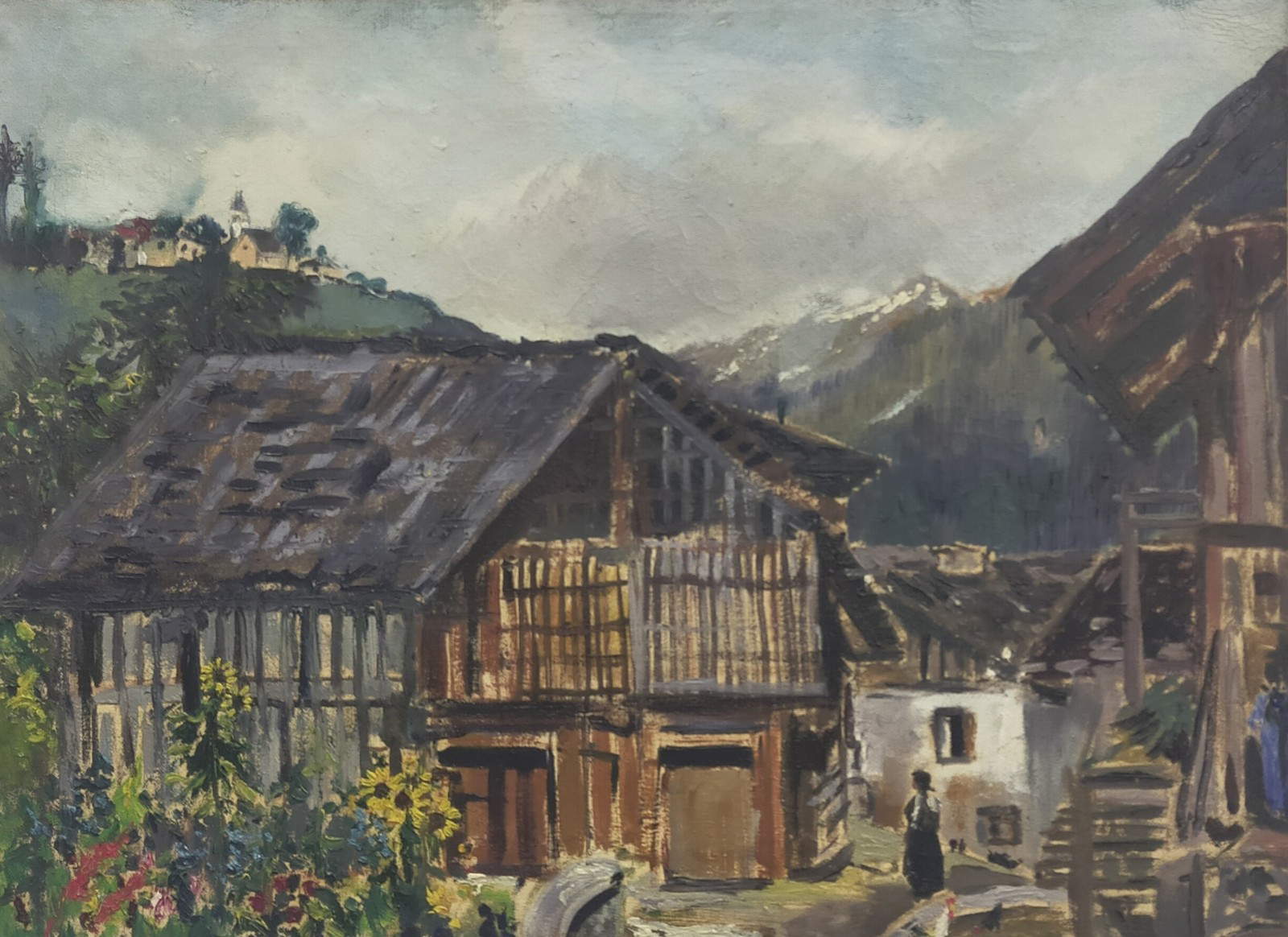From June 19 to July 31, 2025, the de’ Bonis Gallery in Reggio Emilia is hosting Viaggio in Italia, an exhibition that aims to be an itinerary through 20th-century Italian painting, with the goal of returning to the public a complex and multifaceted cross-section of the country’s cultural identity through the eyes of some of the most significant artists of the last century. The opening is set for Thursday, June 19, at 6 p.m. at the gallery’s headquarters on Viale dei Mille 44/D.
The exhibition project stems from a reflection on the centrality of landscape as a form of expression and as a key to interpreting twentieth-century pictorial ’Italianness.’ The selected works take on the value of artistic testimonies of a time and a spirit, offering a vision that interweaves collective memory, formal language and personal interpretation. The intent is analytical: the exhibition is configured as a tool to observe, through the different styles and approaches of the artists involved, how Italian painting has crossed the century with a plurality of looks and poetics.
“A section that completes the main itinerary,” explains gallery owner Stanislao de’ Bonis, “to give voice, even beyond the landscape, to the innovation and history of Italian art.”


Within the proposed itinerary are views and landscapes that connect as much to iconic places as to interior universes. It starts from the Emilian countryside reinterpreted by Antonio Ligabue, an author with strong expressionist connotations, who transfigures reality with primitive and vibrant features. The journey continues ideally northward, with a view of Cortina signed by Filippo de Pisis, who in this Alpine place found a private and lyrical dimension, far removed from the clamors of the metropolis.
Salvo, among the most reevaluated artists of the moment, appears for the first time within a selection curated by Galleria de’ Bonis: his canvas offered in the exhibition, despite its apparent simplicity, condenses a pictorial vision built by subtraction, in which color becomes structure and rhythm. The mountain also imposes itself in Mario Sironi’s canvas, with its mighty rocks, charged with plastic and symbolic gravity, in a tension that refers to one of the most intense moments of his production. Another lacustrine landscape, this time played on light tones and more relaxed atmospheres, is the one created by Umberto Lilloni. His painting reflects the poetics of Lombard Chiarismo, which in the 1930s proposed itself as an alternative to the monumental emphasis of the official painting of the time. There is also a testimony by Alberto Manfredi, an artist from Reggio Emilia who reinterprets the landscape through a geometric lens, deconstructing its elements to reveal new balances and compositional tensions.

The Versilian beaches in Carlo Carrà ’s canvases appear unexpectedly empty and silent, almost abstract, as if the painter wanted to subtract any narrative element to enhance absence and suspended time. Piero Gilardi’s approach is different, and he is present in the exhibition with a work that proposes a stream bed transformed into a “nature carpet,” where the landscape element is replicated with synthetic materials, erasing the boundary between art and design, between natural and artificial. But the journey does not end with the landscape theme. Viaggio in Italia also includes works that, while not depicting specific places, tell the story of 20th-century Italy through formal research, linguistic innovation and expressive urgency. This is the case of Giacomo Balla, whose painting Ballerina più spazio is on display, a Futurist composition that synthesizes the dynamism and fragmentation of movement, reflecting the tensions of the time and adherence to the European avant-garde. Instead, Fausto Melotti looks to the theater, featured in the exhibition with works that explore the language of sculpture and bas-relief. His light and musical forms, animated by a sense of balance and abstraction, propose an idea of art understood as an intellectual construction, where each element is placed in a web of conceptual references. Alongside the names already mentioned, the public will be able to confront the production of other masters who have traversed, each with his or her own stylistic signature, the history of Italian art of the last century. Renato Guttuso, with his intense and politicized painting, Giuseppe Migneco, with the narrative force of his popular figures, MarioSchifano, visionary interpreter of the contemporary landscape, Tino Stefanoni, whose works reflect a constant tension between image and sign. Each of them contributes to compose the complex mosaic of the exhibition, offering different and complementary looks at Italy and its artistic representation. The curatorial choice of Galleria de’ Bonis, consistent with the line of research that has made it a reference for collecting and valorizing 20th-century figuration, is distinguished by critical rigor and the desire to restore a historical-artistic depth to the works on display, without indulging in nostalgia or rhetoric.

Hours: Tuesday through Saturday 10 a.m.-1 p.m. and 4 p.m.-7 p.m., Thursday 10 a.m.-1 p.m.
Free admission
 |
| From Ligabue to Salvo, an itinerary through twentieth-century Italy: an exhibition at Galleria de' Bonis |
Warning: the translation into English of the original Italian article was created using automatic tools. We undertake to review all articles, but we do not guarantee the total absence of inaccuracies in the translation due to the program. You can find the original by clicking on the ITA button. If you find any mistake,please contact us.